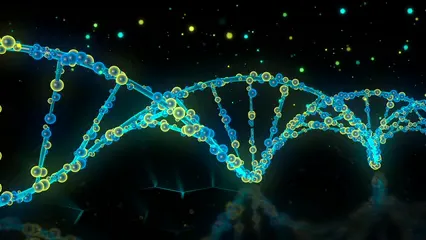Introduction
Welcome to the fascinating world of FST, or the Fixation Index! Imagine a genetic detective, sleuthing through the alleles of various populations to uncover their evolutionary secrets. That’s precisely what FST does in population genetics. Developed by the brilliant Sewall Wright, FST measures how much genetic variation is present among different populations compared to the variation within them. It’s like a genetic GPS, guiding scientists through the intricate routes of genetic diversity. This article aims to illuminate the concept of FST and its significance. Readers can expect to learn not just the “what” but also the “why” behind FST. We’ll explore its mathematical underpinnings, interpret its values, and discuss its applications in real-world scenarios. Understanding FST is crucial for conservation efforts, evolutionary biology, and genetic research. It helps us grasp how populations evolve, adapt, and sometimes face the dire consequences of genetic isolation. In conservation, for example, a high FST value might signal the need for intervention to prevent inbreeding in endangered species. In evolutionary biology, it reveals how natural selection shapes genetic structures over time. By the end of this journey, you’ll appreciate FST’s role as a vital tool for scientists and conservationists alike, unraveling the genetic tapestry of life on Earth. And while you’re at it, check out “The Selfish Gene” by Richard Dawkins for a deeper dive into evolutionary concepts!
Understanding FST
What is FST?
FST, or the Fixation Index, quantifies population differentiation based on genetic data. It reflects the probability that two alleles randomly chosen from different populations are identical by descent. In simpler terms, it tells us how distinct two populations are genetically. Developed in the early 20th century by Sewall Wright, FST has become a cornerstone in the field of population genetics. Wright introduced FST as part of his broader work on genetic variance and population structure. He shaped our understanding of how populations evolve and how genetic drift influences allele frequencies over time. FST is not just a number; it’s a window into the evolutionary processes that sculpt the genetic landscape of species. If you’re looking to expand your understanding of genetics, grab a copy of “Genetics For Dummies” by Tara Rodden Robinson—it’s a great starter guide!Mathematical Foundations
The formula for FST is elegantly simple: Here, H_T represents the total expected heterozygosity of the combined populations, while H_S is the average expected heterozygosity within those populations. This formula gives us a clear insight into genetic differentiation. And if you want to delve deeper into population genetics, you might find “Population Genetics: A Concise Guide” by John H. McDonald invaluable! To understand the relationship between FST and allele frequencies, consider a scenario where two populations have different frequencies of a specific allele. If the allele is common in one population but rare in another, FST will reflect this disparity. It quantifies how much of the total genetic variation is due to differences between populations versus differences within them.
Interpretation of FST Values
FST values range from 0 to 1, where:- 0 indicates complete panmixia, meaning that the populations interbreed freely with no differentiation.
- 1 suggests complete differentiation, where the populations are entirely distinct genetically.
- Low FST values (0.0 – 0.05) indicate minimal genetic differentiation. For instance, human populations from neighboring regions may show low FST values due to high levels of gene flow.
- Moderate FST values (0.05 – 0.15) suggest some level of genetic structure. This might be observed in populations that are somewhat isolated, like those on different islands.
- High FST values (0.15 and above) indicate significant genetic divergence, often seen in species with limited gene flow, such as isolated populations of endangered species or those adapted to very specific environments.
For deeper insights into how statistics can help in understanding population dynamics, check out this article on statistics for understanding beliefs convergence in healthcare.

Calculating FST: Step-by-Step Examples
Example 1: FST Calculation in Human Populations
Let’s consider a real-world scenario involving two human populations: Population A and Population B. We’ll use genotype data to calculate the FST value, which reveals the genetic differentiation between these groups. Step 1: Gather Genotype Data Imagine we have the following genotype counts for a specific locus:- Population A:
- AA: 60
- AB: 30
- BB: 10
- Population B:
- AA: 20
- AB: 40
- BB: 40
- For Population A (Total = 100 individuals):
- Frequency of A (p_A):
- Frequency of B (q_A):
- For Population B (Total = 100 individuals):
- Frequency of A (p_B):
- Frequency of B (q_B):
- For Population A:
- For Population B:

Example 2: FST in Plant Species
Let’s turn to the plant world with a case study on Camelina sativa—a promising oilseed crop. Researchers examined genetic diversity among 213 accessions of this plant species. Step 1: Collect Genetic Data Using genotyping-by-sequencing technology, researchers identified 6,192 high-quality SNPs across the accessions collected from various regions. Step 2: Calculate Allele Frequencies The next step involved calculating allele frequencies within the populations. The frequencies indicated a significant presence of certain alleles, critical for the crop’s adaptability to environmental changes. For those interested in hands-on learning, a Plant Genetic Engineering Starter Kit could be a fun addition to your experiments! Step 3: Calculate Expected Heterozygosity Researchers found the expected heterozygosity for the populations. This metric gives insight into genetic diversity, helping to inform breeding strategies aimed at enhancing traits like yield and stress resistance. Step 4: Determine FST Values By calculating FST, researchers assessed genetic differentiation among the populations. They found a low FST value (approximately 0.039), suggesting that gene flow was substantial among populations, indicating good potential for breeding programs.
Example 3: Using FST to Assess Genetic Structure
Our final example involves marine mammals, where genetic structure plays a role in understanding dispersal and migration patterns. Step 1: Collect Genetic Data Research focused on two populations of whales. Genetic samples were collected, and their genotypes were analyzed. Step 2: Calculate Allele Frequencies Similar to previous examples, allele frequencies were calculated from the genotypic data, revealing differences between the two populations. Step 3: Calculate FST Values FST was calculated to measure genetic differentiation: Where \(\sigma_S^2\) represents the variance among populations, and \(\sigma_T^2\) is the total variance. The researchers found a high FST value, indicating significant genetic structure. Visual Aids Incorporating graphs and charts, the researchers illustrated the genetic differentiation clearly. These visual aids enhanced understanding and highlighted the implications for conservation efforts, particularly regarding migratory routes and habitat connectivity. If you’re a fan of nature photography, you might enjoy a Nature Photography Book for inspiration!

Applications of FST in Population Genetics
Conservation Genetics
FST plays a crucial role in conservation genetics. It helps assess genetic diversity and inbreeding in endangered species. Genetic diversity is vital for species’ survival. When populations become too isolated, inbreeding can lead to a loss of genetic variation. This reduction can increase vulnerability to diseases and environmental changes. For example, consider the conservation efforts for the Florida panther. This species faced extreme inbreeding due to habitat fragmentation. Researchers calculated FST values among the remaining populations. The high FST indicated significant genetic differentiation. To combat this, conservationists introduced Texas cougars into the population. This strategy increased gene flow and boosted genetic diversity. You can also explore wildlife conservation through books like Wildlife Conservation Books for Kids—a great way to inspire the next generation!
Evolutionary Biology
In evolutionary biology, FST aids in understanding processes like natural selection and genetic drift. By measuring genetic differentiation, scientists can infer how populations adapt over time. FST values offer insights into how selection pressures shape genetic structures. A classic example is the study of Darwin’s finches. Researchers examined FST values across different finch populations on the Galápagos Islands. The findings revealed significant genetic divergence linked to feeding habits and environmental factors. This divergence highlighted how natural selection drove adaptations in beak size and shape, showcasing evolutionary dynamics in action. For those curious about genetics, consider “Genetics: A Conceptual Approach” by Benjamin A. Pierce for a thorough understanding!
Forensic Science
FST is also pivotal in forensic genetics. It aids in individual identification and population comparisons. In forensic investigations, understanding genetic differentiation can help determine the likelihood of relatedness between individuals. For example, in a high-profile case, forensic scientists analyzed DNA from a crime scene. They calculated FST values between the suspect’s DNA and a population database. The results indicated a low FST value, suggesting a close genetic match. This information was critical in establishing the suspect’s connection to the crime. In the realm of forensic science, don’t forget to explore Genetic Testing Kits that can provide insights into personal ancestry!

Challenges and Limitations of FST
Assumptions of FST Calculations
FST calculations hinge on several key assumptions. First, random mating is essential. This means all individuals in a population should have an equal chance of mating. If individuals preferentially mate with relatives, the calculated FST values can be skewed, rendering them less reliable. This situation can lead to an inflated FST, indicating higher differentiation than actually exists. Another assumption is the absence of selection. Selection pressures can significantly impact allele frequencies. If certain alleles confer advantages or disadvantages, the overall genetic structure of a population may not reflect neutral processes. This can distort FST values, making them less representative of true population differentiation. Additionally, FST assumes no mutation occurs during the study period. Mutations introduce new alleles into the population, affecting allele frequencies. If mutations happen frequently, they can obscure the historical genetic relationships that FST aims to measure. Consequently, FST values may not accurately represent genetic differentiation. Finally, the model presupposes populations are closed systems. Real-world populations often interact through migration, which can blur the lines of differentiation. If gene flow occurs between populations, FST values may underestimate the genetic similarities that arise from such interactions.
Alternatives to FST
While FST is widely used, several alternatives can be more suitable in certain contexts. One such alternative is GST, which measures genetic differentiation across populations but is particularly useful for alleles with varying frequencies. Unlike FST, GST accounts for the actual allele frequencies, offering insights into how much of the genetic variation is due to differences between populations. Another alternative is RST, commonly used for microsatellite data. RST considers the stepwise mutation model, making it valuable for populations where mutations occur in small increments. This can provide a finer resolution of genetic differentiation, especially in populations with high variability in allele sizes. In some cases, researchers may prefer using QST, which focuses on quantitative traits rather than genetic markers. QST can indicate how selective pressures influence traits across populations. This measure allows for comparisons between genetic differentiation and phenotypic variation, providing a broader understanding of evolutionary processes.

Conclusion
Understanding FST, or Fixation Index, is vital for researchers in population genetics. Throughout this article, we explored the significance of FST in measuring genetic differentiation among populations. This statistic acts like a genetic magnifying glass, revealing the hidden structures within and between groups. It helps scientists understand how populations evolve, adapt, and respond to environmental changes. We learned that FST values range from 0 to 1. A value of 0 indicates no differentiation, while 1 shows complete separation. High FST values suggest limited gene flow between populations, often signaling potential issues like inbreeding. This is particularly crucial for conservation efforts. By identifying populations that are genetically isolated, conservationists can take action to preserve genetic diversity and ensure species survival. If you’re interested in a broader understanding of genetics, consider reading “Molecular Biology of the Cell” by Bruce Alberts—a fundamental text in the field! Moreover, the applications of FST extend beyond conservation and evolutionary biology. It plays a pivotal role in forensic science and medical research, helping to identify genetic links in human populations. This versatility makes FST an essential tool for various scientific fields. As we wrap up this discussion, we encourage readers to continue exploring the fascinating world of population genetics. Delving deeper into the methodologies and implications of FST can illuminate many aspects of biodiversity and evolution. Each study contributes to our understanding of life’s complexities and the intricate dance of genetics in shaping populations. And if you’re looking for a fun way to learn about evolution, check out the Evolution Board Game—it’s a blast!FAQs
What is the significance of a high FST value?
A high FST value indicates substantial genetic differentiation between populations. It suggests that these groups have limited gene flow. This can arise from geographical barriers, environmental differences, or behavioral factors. In practical terms, it means that individuals from different populations are more genetically distinct than those within the same group. High FST values often highlight concerns about inbreeding and loss of genetic diversity, which can threaten the survival of species.
How can FST be used in conservation efforts?
Conservationists utilize FST data to assess genetic diversity within endangered species. By identifying populations with high FST values, they can recognize those at risk of inbreeding. This information helps inform breeding programs aimed at increasing genetic variability. For instance, in the case of the Florida panther, high FST values prompted genetic introductions from Texas cougars to enhance genetic diversity, improving the population’s health and resilience.
Can FST values change over time?
Yes, FST values can evolve due to several factors. Changes in migration patterns, environmental shifts, or selective pressures can all influence genetic differentiation. For example, if a population experiences increased isolation due to habitat destruction, its FST value may rise as gene flow decreases. Conversely, if gene flow increases through migration or human intervention, FST values may decrease, indicating a reduction in genetic divergence.
What software can be used to calculate FST?
Several software programs are available for calculating FST, including Arlequin, FSTAT, and diveRsity, among others. These tools provide researchers with user-friendly interfaces to input genetic data and obtain FST estimates efficiently. Additionally, R packages such as hierfstat and FinePop are popular among geneticists for analyzing population structure and performing FST calculations.
How does FST relate to migration rates?
FST is inversely related to migration rates. The more individuals migrate between populations, the lower the FST value, indicating higher genetic similarity. Wright’s island model provides a formula to estimate migration rates based on FST. If FST is high, it suggests limited migration, which can lead to genetic divergence. Understanding this relationship is crucial for interpreting genetic data and managing populations effectively.
All images from Pexels




